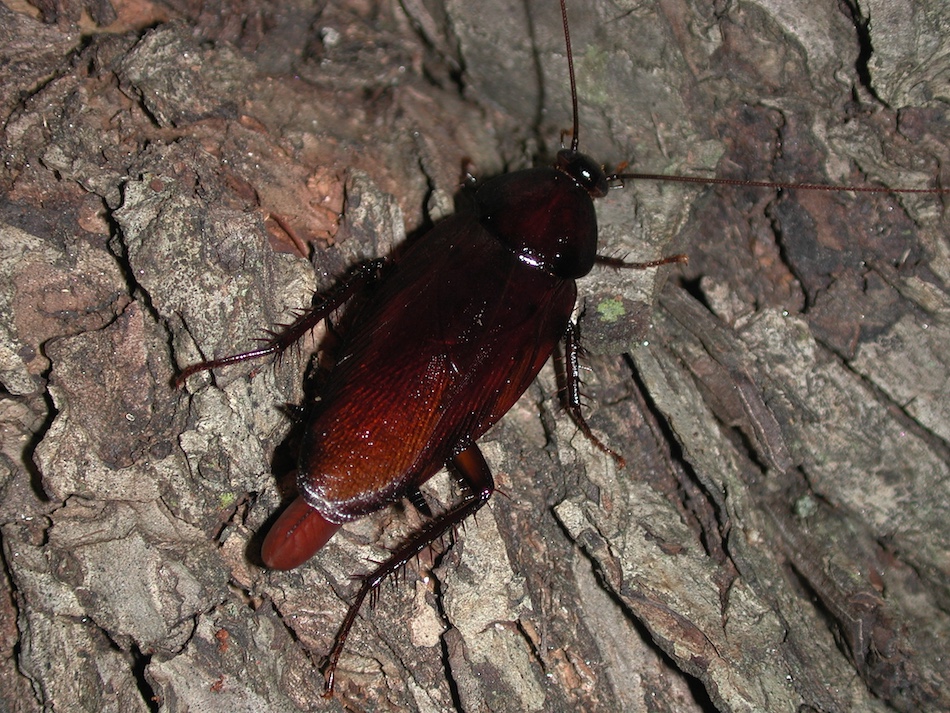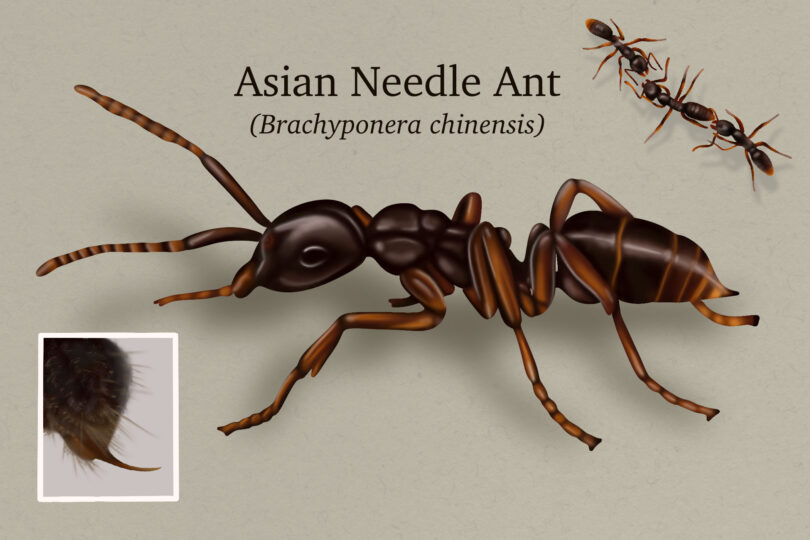
It’s summertime, and there are a few things residents of the Deep South can count on this time of year — heat, humidity and insects.
Fireflies and cicadas are popular topics these days, but of all the creeping, crawling, buzzing creatures that bug us, one is met with near-universal revulsion — the roach.
Whether you’re new to the South or a lifelong resident, you’ve likely run into one of the several species of cockroaches that are common in the region. You’ve probably also heard them referred to as palmetto bugs, a regional term for several winged species of cockroach that can grow to more than an inch in length.
‘A roach is a roach’
And while there are distinguishing differences between species, a roach is just a roach, according to Dan Suiter, the Orkin Distinguished Professor in Urban Entomology at the University of Georgia’s College of Agricultural and Environmental Sciences (CAES).
“We’ve got about five or six different species of cockroaches that are common to the Southeast, but the one we're talking about is called the smokybrown cockroach, Periplaneta fuliginosa. It’s not native to the U.S. — it is believed to be from Japan. We don’t know how it got here, but it's very common throughout the Southeastern U.S.,” said Suiter, who also serves as an entomologist for UGA Cooperative Extension. “I call it the bread-and-butter bug for the pest control industry because everybody has this cockroach in their house.”
Unlike the German cockroach (Blattella germanica) — small, lighter brown roaches most commonly associated with sanitation — smokybrown cockroaches are most commonly found in areas characterized by large, mature hardwood trees and high humidity.
“Typically, you won’t find them in a new home. They tend to show up in older neighborhoods where there are mature hardwood trees and things like that because they love to live in knot holes in these trees,” said Suiter. “Years ago, we did some research in which we just walked around campus and Athens at night, and almost every tree had these cockroaches in it. You don't know it until nighttime and then they come scurrying out of these tree holes, looking for something to eat.”
“Palmetto bug” is a catch-all term often applied to smokybrown cockroaches and their cousins, the American cockroach (Periplaneta americana) and the Oriental cockroach (Blatta orientalis), but may have originated with the Florida woods roach (Eurycotis floridana), a species that can grow up to 1.5 inches in length and is commonly found in palm trees, said Suiter, a south Florida native.
“People will say they have palmetto bugs, but it's just a nice way to say cockroach. It’s really not anything that people are doing wrong in their homes. If you have German roaches, then it’s an issue of sanitation. Even in cases like that, if you’re in an apartment complex, you could be the cleanest person in the world, but if you have people beside or above or below you who aren’t as clean, they’ll move through the walls,” he said.
Know your enemy

Smokybrown cockroaches prefer warm weather (above 68 degrees Fahrenheit) and they require constant moisture to avoid drying out. They are most active at night, when humidity is higher, and may enter homes seeking water.
“Many people’s attics leak water. It's very common to have some type of pipe that penetrates the roof where it's not sealed properly. If a little bit of water collects in the attic, it basically becomes the ecological equivalent of a tree hole,” Suiter explained. “It's warm and it’s moist and they love that.”
While high temperatures in the daytime keep activity at a minimum, smokybrown cockroaches become active at night.
“They're nocturnal. They appear at nighttime and they scurry, I think that's one of the things that freaks people out. And this one, the smokybrown cockroach, has been known to fly at people,” Suiter added. “They aren’t harmful — I think it thinks you're a tree or something. If you see one on a wall, I can tell when they're about to fly. They stand up high on their legs and their antennae go out and they're getting ready to fly. I have seen people just lose it when one of these big cockroaches starts flying at them.”
While excluding cockroaches from your home entirely is a near impossibility, Suiter said the nature of the skittering creatures makes them easy to control, but he does not recommend running out for a big can of bug spray.
Tips for a roach-free home
“They're just out looking for something to eat, so this actually makes them very baitable,” Suiter said. “If you get a good granular bait or gel bait, you really don't need to spray. There are some pretty good granular and gel baits available at home improvement stores that you just spread around when you see them. A little bit goes a long way because these roaches come out when they are foraging, looking for something to eat. When they come across these baits or granules, they’ll eat it.”
Suiter prefers the control allowed when using granular or gel baits versus spray insecticides, which can harm beneficial insects in the environment, such as parasitic wasp species that are natural predators to many cockroaches.
A female cockroach must mate only once to produce all the eggs she'll ever lay, and over the course of a 6-to-9-month lifespan will deposit one egg case per week, each containing 12-20 eggs per case. And while cockroaches are prolific, nature takes care of many of these potential pests.
“There are parasitic wasps that are attracted to those egg cases by chemical cues. They will lay their own eggs in it and then the wasp eggs hatch and eat the entire contents of the egg case. We did a study in Gainesville, Florida, years ago that showed that about half of the egg cases that we selected from the environment were parasitized by this wasp,” Suiter explained. “If you go spraying a pesticide in the environment or in that tree hole or wherever, you are just as likely to kill those wasps. They're indiscriminate, they kill everything, including the natural enemies.”
For those interested in a deeper dive into home pest control, Suiter recommends referring to Extension publications “Insect and Arthropod Pests of Southeastern Neighborhoods: A Guide to Identification and Management” or the “Georgia Pest Management Handbook: Home and Garden Edition.”
“Just because it's flying around and looks scary, don't just spray everything everywhere. The bug bombs that people set off in their homes are totally ineffective because the roaches and bed bugs they say they are designed to kill are actually resistant to the insecticides in total release aerosols,” he said. “First of all you have no control over where that goes when you set it off. The chemicals in that can that are designed to kill the insects and it gets on everything. It could just be worse for you and not the bugs.”
Listen to a recent interview with Suiter on CAES podcast Cultivating Curiosity to learn more about home pest control and urban entomology.






